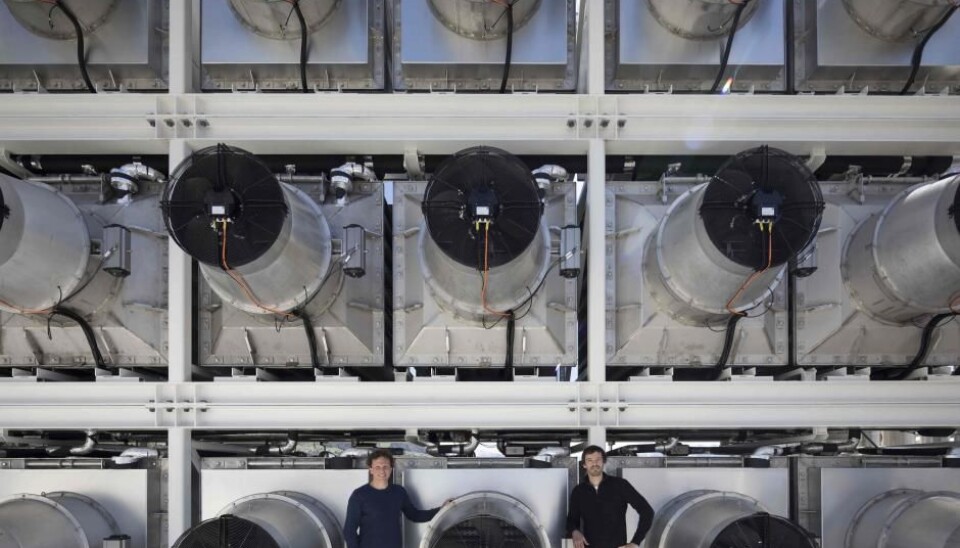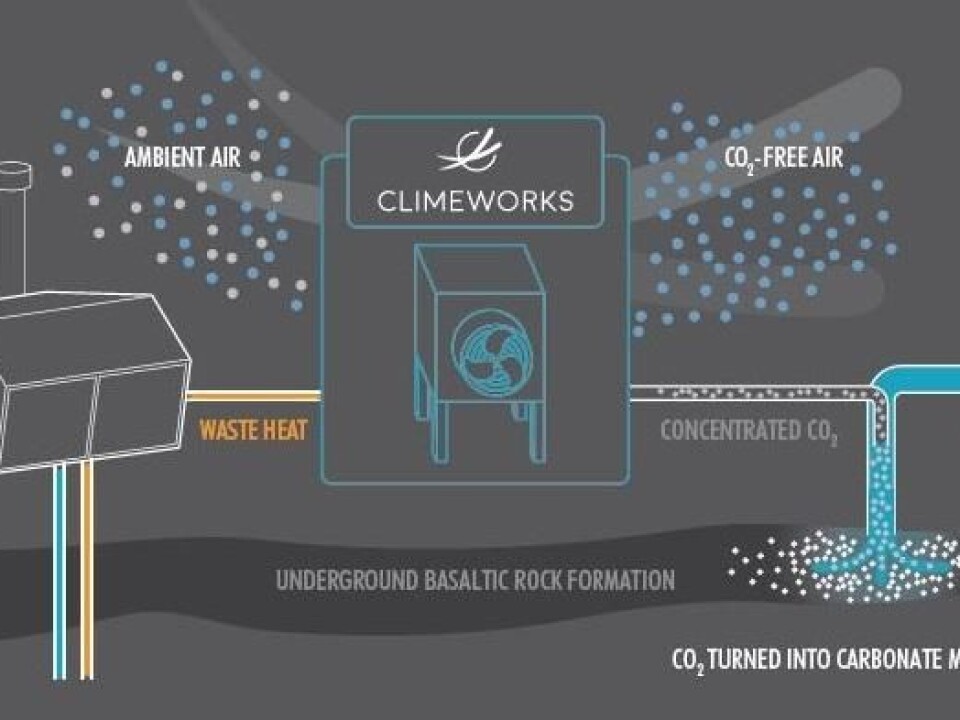
The machine that converts carbon dioxide to stone in Iceland
The new technology could help mitigate climate change, says scientist.
A Swiss company, Climeworks, has developed a machine that can draw carbon dioxide (CO2) out of the air and bury it deep underground.
The machine is now operational in Iceland, where it is already pulling CO2 out of the atmosphere and thereby helping in the fight against climate change—albeit on a small scale.
According to the company, the technology could be scaled up or down, meaning that it could be deployed by large industries as well as individuals to achieve a net negative CO2 footprint.
“The potential of scaling-up our technology in combination with CO2 storage, is enormous. Not only here in Iceland but also in numerous other regions, which have similar rock formations,” says Christoph Gebald, founder and CEO at Climeworks in a press release.

Read More: Pumping CO2 into volcanic rock transforms it into limestone in record time
Need to achieve negative CO2 emissions
The new technology could help reach the goals of the Paris Agreement to limit global warming to “wellbelow” two degrees centigrade, and preferably below 1.5 degrees, says Associate Professor Philip Fosbøl, Chemical Engineering, Center for Energy Resources Engineering at the Technical University of Denmark.
“If we want to meet the goals of the Paris Agreement, then the entire world needs to have a negative CO2 emission by around 2050—removing more CO2 than we emit—we need a technology which can draw CO2 out of the atmosphere. This technology is a part of the toolbox that we need to seize upon for this to happen,” says Fosbøl, who is not involved in the Climeworks project.
Negative emission technology was a key focus at the recent COP23 climate conference in Bonn, Germany, says Fosbøl. The Climeworks setup is the first of its kind to begin operations.
Read More: What’s the best way to implement carbon capture technology?
Converts CO2 to stone
The machine itself is part of the CarbFix2 project in Iceland. It uses special filters to isolate CO2 directly from the air, allowing all the other components to pass through, including oxygen and nitrogen.
The filters are then heated to release the CO2 gas, which is pumped 700 metres underground where the CO2 reacts with the Icelandic basaltic rock and is converted to carbonate, such as iron carbonate (siderite).
The CO2 is effectively locked underground, removed from the atmosphere and unable to return to the surface. The entire process from air to rock takes two years.
“We have developed CarbFix at a unique location here in Iceland and proved that we can permanently turn this greenhouse gas into rock,” says Edda Sif Aradóttir, CarbFix project leader at Reykjavik Energy, Iceland, in a press release.
Read More: Average Danish household has fifth highest carbon footprint in Europe
Requires sustained surplus energy
But there is one problem with the technology, says Fosbøl. It requires energy in order to capture CO2 and convert it to rock.
Therefore, the solution is particularly well-suited to Iceland, where large amounts of surplus energy are available from geothermal power plants.
It may not be a viable option in locations where no surplus energy is available and/or comes from non-renewable resources.
Nonetheless, Fosbøl remains optimistic.
“Compare it to the first wind turbines. Back then, people also said that making energy from wind wouldn’t work, and look where we are today. The same could apply to the technology for removing CO2 from the air and storing it away underground,” he says.
Read More: Meet the copepod: the oceans’ little carbon sponge
Can reduce CO2 emissions from factories
To begin with, the technology is most suited to direct use in high emission industries such as the cement industry, says Fosbøl.
The technology could make today’s high emission industries CO2 neutral, or even CO2 negative, with the help of wind and solar energy.
“Even though it is enticing to imagine a large machine that cleans the air in various locations around the world, the investments should of course happen where the largest emissions of CO2 are, for example from industry,” says Fosbøl.
But we still need to reduce CO2 emissions, he says.
“If we are to solve climate change, then we need a lot of different approaches. Machines to remove CO2 from the atmosphere could be a part of that solution, but we should first focus on reducing our emissions,” says Fosbøl.
---------------
Read more in the Danish article on Videnskab.dk
Translated by: Catherine Jex




